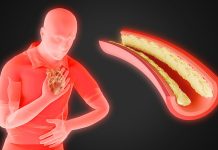
At The Ohio State University, a team of researchers has taken a major step forward in unraveling the mysteries behind certain deadly heart rhythm disorders, with their spotlight on a protein named calmodulin.
This protein is pivotal in heart health, as it controls the flow of sodium and calcium ions within the heart’s muscle cells.
These ions’ movements are crucial for maintaining the heart’s rhythm and the electrical activity observed in heart tests like electrocardiograms.
The disorders linked to mutations in the calmodulin gene, known as calmodulinopathies, are serious conditions that can lead to fatal heart rhythms.
Until now, these conditions have been challenging to treat effectively, mainly due to a lack of comprehensive understanding of how mutations in calmodulin lead to heart rhythm problems.
The research team, combining expertise from Ohio State’s colleges of Pharmacy, Medicine, and Engineering, used animal models to shed light on how a specific mutated form of calmodulin, known as D96V-CaM, is involved in creating heart arrhythmias.
They discovered that this mutation allows an abnormal influx of sodium ions through the heart muscle cells’ channels, triggering improper calcium ion releases and leading to arrhythmias. These groundbreaking results were shared in the Journal of Clinical Investigation.
One of the study’s most exciting aspects is the potential for developing new treatments based on already available drugs to combat calmodulinopathies.
The researchers identified a novel dysfunction in sodium channels caused by the mutated calmodulin, offering a new target for therapy.
Przemysław Radwanski, the study’s principal investigator, expressed optimism about this approach, suggesting it could pave the way for treatments for a currently incurable congenital heart disorder.
The research team’s approach involved using a genetically modified mouse model to explore whether targeting the affected sodium channels could be a viable treatment strategy. Their findings revealed that:
- The mutated calmodulin, D96V-CaM, specifically interferes with a particular sodium channel known as NaV1.6.
- This mutation does not affect NaV1.5, the most prevalent sodium channel in heart muscle cells.
- The issues caused by D96V-CaM result in cardiac arrhythmias due to the abnormal calcium ion release.
The implications of this study extend beyond just calmodulin-related heart diseases.
By gaining a deeper understanding of how these disorders arise, the researchers aim to develop strategies to prevent arrhythmias caused by both congenital mutations and acquired issues in sodium-channel function.
This research not only offers hope for those directly affected by calmodulinopathies but also has the potential to influence treatments for a wider range of heart rhythm disorders.
This advancement represents a significant step forward in heart disease research, opening up new avenues for treating conditions that were once thought untreatable.
If you care about heart disease, please read studies that herbal supplements could harm your heart rhythm, and how eating eggs can help reduce heart disease risk.
For more information about heart health, please see recent studies that apple juice could benefit your heart health, and results showing yogurt may help lower the death risks in heart disease.
Copyright © 2024 Knowridge Science Report. All rights reserved.



